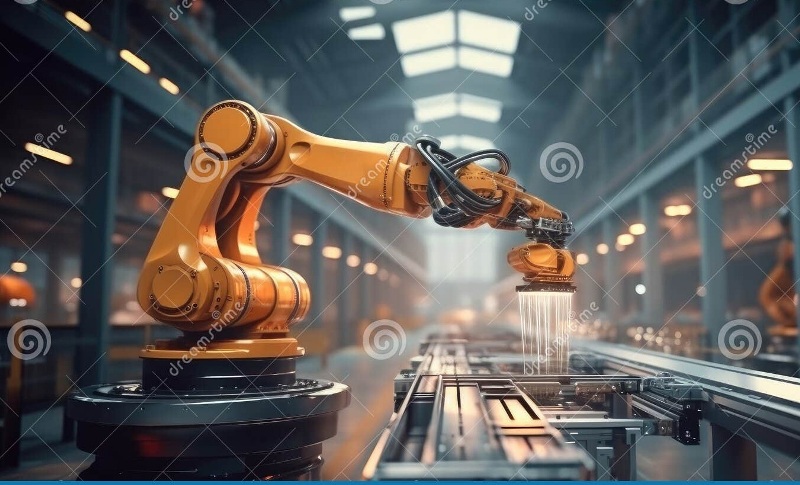In a world where immediacy is the norm, Spanish warehouses are at a crucial crossroads. The reliance on manual processes, with their inherent propensity for error and inefficiency, clashes head-on with the demands of a market that requires speed, precision, and flexibility. This clash between the traditional method and the pressing need for modernization positions automation not as a mere technological option, but as a strategic solution that, however, presents a profound human dilemma: how to integrate technology to enhance, not replace, the value of people.
Manual operations in the warehouse are a constant source of challenges. Errors in picking, packing, or labeling, a direct consequence of interpreting handwritten papers, lead to customer dissatisfaction, costly returns, and damage to the merchant’s reputation. Furthermore, manual inventory management creates a lack of visibility that results in “invisible stock” and lost sales.
The human cost is equally high: employees can lose up to a full day of productivity per week simply searching for information, a burden that generates frustration and demotivation. Added to this, physically demanding tasks, such as walking kilometers daily while carrying goods, lead to physical wear and tear and high staff turnover.
Faced with this scenario, automation stands as the great lever of transformation. Far from the image of cold, completely empty warehouses, the reality is rather one of intelligent collaboration. Autonomous mobile robots transport shelves to the operators, eliminating hours of walking and allowing them to focus on higher-value tasks, such as solving complex problems.
Warehouse Management Systems (WMS) and Transport Management Systems (TMS) integrate real-time data, offering total visibility of the supply chain, enabling more agile and informed decision-making. The impact is tangible: companies like Amazon report an 18 percent reduction in lost-time incidents in their robotic facilities, while DHL has seen its productivity increase by 25%.
The transformation driven by automation is profound and manifests in all aspects of operations. In terms of accuracy, it moves from a high probability of human error in picking or shipping to an environment of exactitude where errors are drastically reduced. Efficiency ceases to depend on the physical capacity of the operator and slow tasks, giving way to fast and optimized processes where robots take on the repetitive load.
In terms of work safety, the change is crucial: it moves away from physically demanding work with a higher risk of injury to create safer environments where machines handle heavy loads. Finally, the role of the employee evolves significantly; if before it was focused on repetitive, low-value-added tasks, it now shifts towards supervision, exception management, and strategic activities that require judgment and problem-solving skills.
The human dilemma lies in whether it is a threat or a development opportunity, and that is the core of the debates. It is undeniable that automation displaces certain jobs, especially those based on repetitive and physical tasks. Workers’ fear of being replaced by machines is real and understandable. However, the evidence points to a transformation rather than a simple substitution. As Tye Brady, Chief Technologist at Amazon Robotics, points out, the company has created more than 700 categories of new jobs since introducing robots into its operations. The key is not the disappearance of employment, but its evolution towards roles that require new skills.
The future is not total automation, but collaboration. Julie Shah, a professor at MIT, emphasizes the importance of a “human-centric approach” in technology design, where robots act as collaborators who understand human needs, not as mere tools.
Collaborative robots or “cobots” are a perfect example: they work side-by-side with people, taking on the heavy and repetitive part of the work, while the operator contributes their judgment, adaptability, and ability to resolve unforeseen issues. This synergy not only increases productivity but also makes work environments safer and more satisfying.
But to successfully navigate this transition, continuous training is the compass. Workers must be prepared to take on roles in supervision, maintenance of robotic systems, data analysis, and supply chain management. Upskilling and reskilling programs are essential to equip the workforce with the digital and soft skills that the new logistics demands.
Initiatives like the MIT Automation Center, in collaboration with companies like Amazon, seek precisely to understand and facilitate this evolution, ensuring that the benefits of automation translate into better jobs and not greater inequality.
In short, the crossroads of Spanish warehouses in 2025 is a microcosm of a global challenge. Automation is not an end in itself, but a powerful tool for building a more resilient, efficient, and, above all, human logistics.
The challenge is not technological, but social and managerial: it is about leading a just transition that harnesses the potential of machines to unleash the talent, creativity, and judgment of people, creating a future of work in which both humans and robots come out winning.
Have any thoughts?
Share your reaction or leave a quick response — we’d love to hear what you think!





